Producten > Farmaceutische producten > Sterilization tunnels
PennTech Sterilization Tunnels
Sterilization and depyrogenation
Heat destroys microorganisms. The destruction process of micro-organisms is in correlation to the time/temperature couple. The rate of destruction is more or less logarithmic, meaning that in a given time interval and at a given temperature, the same percentage of the bacterial population will be destroyed for each time interval. If the time required to destroy 1-log cycle (90%) is known, and the desired thermal reduction has been decided (e.g. 4-log), then the time required can be calculated.
If, for example, the bacterial population is 1 million CFU (Colony Forming Units), and it takes 5 minutes to destroy 1-log cycle at a certain temperature, then the remaining population after 5 minutes is 100,000 CFU, after 10 minutes 10,000 CFU, after 15 minutes 1,000 CFU and after 20 minutes 100 CFU (4-log cycles).
During the destruction of the cell-wall of bacteria (also called death-phase), endotoxins are released. Endotoxins are pyrogenic. When pyrogens enter the blood stream, white blood cells are activated to encapsulate the pyrogens. This process causes elevated temperatures (fever) in humans and animals.
Pyrogens are too small to be eliminated by filtration. However, heat will disintegrate pyrogens to harmless molecules and atoms.
At 250°C, the time required to disintegrate pyrogens 1-log cycle, is 5 minutes (D-value). Empirically, the D-value is reduced by 1-log cycle with every 46.4°C increase in temperature. In other words, at a temperature (T) of 296.4°C, a 1-log pyrogen reduction is accomplished after 30 seconds. At a temperature of 342.8°C., a 1-log pyrogen reduction is accomplished after 3 seconds.
The table below shows the minimal exposure time to reach the required log reduction:

Available Models:
PST-45/240 (belt width 45cm, overall length 240cm)
PST-45/290
PST-60/370
PST-80/450
PST-80/520
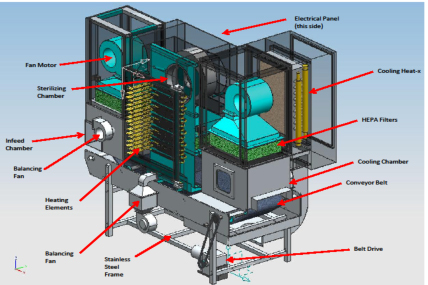
Output per tunnel model per vial format

Overview
The PennTech tunnels are designed for the continuous sterilization/depyrogenation of pharmaceutical glass containers, using hot air, in a class 100 environment according to US Federal Standard 209d.
For this purpose, the tunnel has three chambers, each provided with HEPA-filters.
- The infeed chamber
- The sterilizing chamber
- The cooling chamber
Infeed chamber The infeed chamber functions as a thermal barrier between the vial washing room and the sterilizing chamber. |
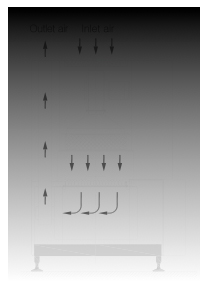 |
Sterilizing chamber |
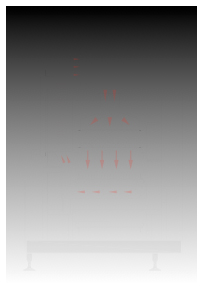 |
Cooling Chamber HEPA filtered, cold and recirculated air blows over the containers in the cooling chamber with a velocity of 0.6-0.7m/s. The air-velocity in the cooling chamber can be adjusted on the HMI and is typically set at 0.7-0.8m/s. The air pressure difference is automatically regulated. (See “air balancing”) |
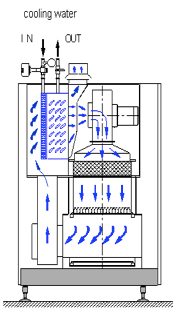 |
Automatic air pressure balancing ensures: - ΔP between the cooling chamber and the washing room |
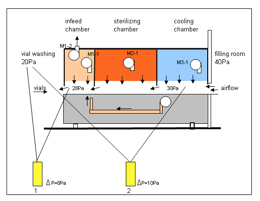 |





